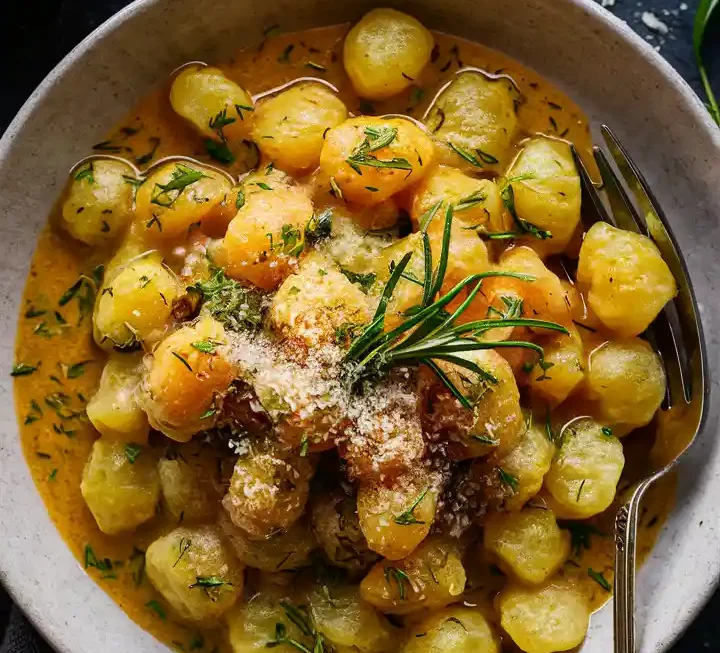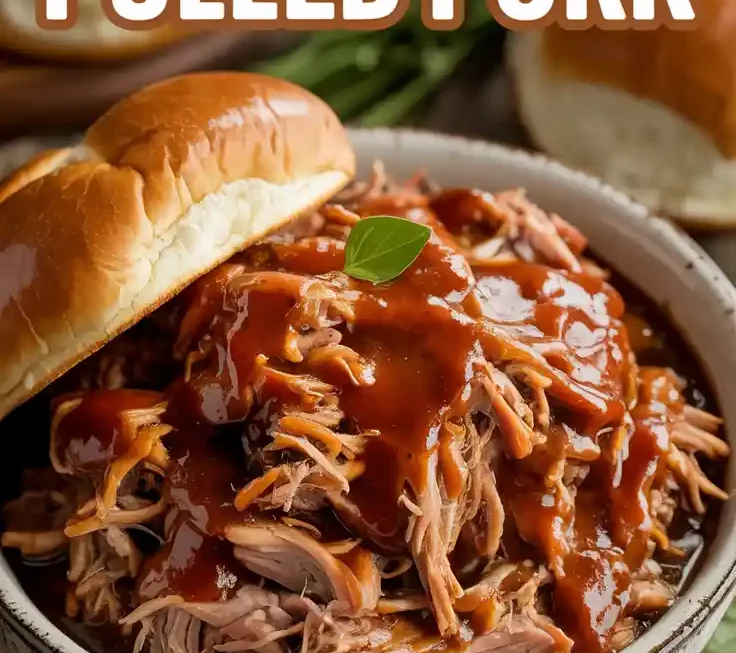Light, pillowy, and melt-in-your-mouth—homemade potato gnocchi is the definition of Italian comfort food. These soft dumplings may look fancy, but they’re surprisingly easy to master at home with just a few simple ingredients. Whether you serve them with a rich tomato sauce, nutty brown butter, or creamy gorgonzola, gnocchi transforms everyday potatoes into a dish worthy of an Italian trattoria.
In this complete guide, you’ll discover not only how to make gnocchi step by step, but also the history behind this beloved pasta, the culinary science that ensures perfect texture, and expert chef tips to help your version outperform any restaurant’s.
🥔 What is Gnocchi? A Brief History
Gnocchi (pronounced nyoh-kee) are Italian dumplings traditionally made with flour, potatoes, and sometimes eggs. While today’s potato gnocchi are the most popular, the earliest versions date back to the 16th century, when Spanish explorers introduced potatoes to Europe.
- Northern Italy: Known for potato-based gnocchi
- Rome: Famous for gnocchi alla Romana, made with semolina flour
- Tuscany: Offers spinach-based malfatti
- Sardinia: Serves malloreddus, a gnocchi-style pasta made with durum wheat
Fun fact: In many Italian households, Thursdays are reserved for gnocchi night (Giovedì Gnocchi)—a tradition that continues in Roman restaurants to this day.
🧾 Essential Ingredients for Perfect Potato Gnocchi
| Ingredient | Role | Tips |
|---|---|---|
| Potatoes (2 lbs Russets) | Provides starch base | Bake instead of boiling for less moisture |
| All-Purpose Flour (1–1.5 cups) | Binds dough | Use as little as possible to keep gnocchi light |
| Egg (1 large, optional) | Adds structure | Beginner-friendly, but omit for extra-light texture |
| Salt & Pepper | Enhances flavor | Season dough lightly |
| Nutmeg (pinch, optional) | Traditional aroma | Adds warmth without overpowering |
🔑 Key Tip: Use starchy potatoes (Russets or Yukon Golds). Avoid waxy varieties like red potatoes—they make gummy, dense gnocchi.
🔪 Equipment You’ll Need
- Potato ricer or food mill (best for fluffy texture)
- Large pot (for boiling potatoes and gnocchi)
- Bench scraper or knife (for cutting dough)
- Fork or gnocchi board (for ridges)
- Baking sheets (for shaping & freezing)
👩🍳 Step-by-Step Potato Gnocchi Recipe
Step 1: Cook the Potatoes
- Bake at 400°F (200°C) for 45–60 minutes OR boil whole, unpeeled potatoes until tender.
- Peel while still hot for fluffier gnocchi.
Step 2: Rice the Potatoes
- Pass through a potato ricer or food mill.
- Spread on a surface and let steam for 5 minutes to release moisture.
Step 3: Make the Dough
- Sprinkle with salt, pepper, and nutmeg.
- Add egg (if using).
- Gently fold in flour a little at a time until dough comes together.
- Knead lightly for 20–30 seconds—overmixing creates toughness.
Step 4: Shape the Gnocchi
- Roll dough into ropes (½-inch thick).
- Cut into 1-inch pieces.
- Press against a fork or gnocchi board for ridges.
Step 5: Cook the Gnocchi
- Drop into salted boiling water in batches.
- Cook until they float (2–3 minutes).
- Remove with slotted spoon and toss with sauce.
⭐ Chef’s Pro Tips for Light & Pillowy Gnocchi
- Bake, don’t boil for drier potatoes.
- Work with hot potatoes to reduce moisture.
- Test a small batch first before shaping all.
- Use semolina for dusting—it prevents sticking better than all-purpose.
- Do not refrigerate raw dough—it becomes sticky.
⚠️ Common Mistakes to Avoid
- Overworking dough → tough gnocchi
- Adding too much flour → dense texture
- Vigorous boiling → gnocchi falls apart
- Crowding the pot → they stick together
- Skipping salt in cooking water → bland results
🥶 Make-Ahead, Storage & Freezing Instructions
- Fridge: Store shaped gnocchi (uncooked) for up to 24 hours on a floured tray.
- Freeze: Lay in a single layer on a tray until solid, then transfer to freezer bags (up to 2 months).
- Cook from frozen—no thawing needed. Just add 30–60 seconds to cooking time.
🍷 Sauce Pairings & Wine Suggestions
| Sauce | Perfect For | Wine Pairing |
|---|---|---|
| Brown Butter + Sage | Nutty, aromatic | Pinot Grigio |
| Tomato Basil Sauce | Fresh & bright | Chianti |
| Gorgonzola Cream | Rich & indulgent | Dry Riesling |
| Pesto Genovese | Herby & summery | Vermentino |
| Beef Ragu | Hearty & bold | Barolo |
🌸 Gnocchi for Every Season
- Spring: Lemon cream gnocchi with asparagus
- Summer: Pesto gnocchi with cherry tomatoes
- Fall: Pumpkin gnocchi with sage butter
- Winter: Gnocchi with beef ragu or gorgonzola
🥗 Nutrition Information (Per Serving – 4 servings)
- Calories: 290
- Carbohydrates: 58g
- Protein: 7g
- Fat: 3g
- Fiber: 3g
- Sodium: 350mg
(Nutrition may vary depending on sauce and portion sizes.)
❓ Frequently Asked Questions (FAQ)
Q: Can I make gnocchi without a ricer?
Yes, use a potato masher, but avoid lumps. Never use a food processor—it makes potatoes gummy.
Q: Why are my gnocchi gummy?
Likely too much flour or overworked dough. Handle gently and use just enough flour to hold shape.
Q: Can I make gluten-free gnocchi?
Yes, substitute a 1:1 gluten-free flour blend or use potato starch + rice flour for a traditional Italian gluten-free method.
Q: Should I refrigerate gnocchi dough?
No—moisture builds up and makes it sticky. Shape and cook immediately, or freeze for later.
Q: What’s the difference between gnocchi and pasta?
Pasta is wheat-based, while gnocchi uses potatoes as the starch, giving it a softer, cloud-like texture.
✅ Conclusion
Homemade potato gnocchi may look intimidating, but with the right technique, anyone can create these light, fluffy dumplings in their own kitchen. From choosing the right potatoes to pairing them with seasonal sauces, gnocchi is endlessly versatile and always comforting.
So grab some Russets, dust your counter with flour, and enjoy the timeless Italian tradition of making gnocchi by hand. Once you taste the difference, you’ll never go back to store-bought!



